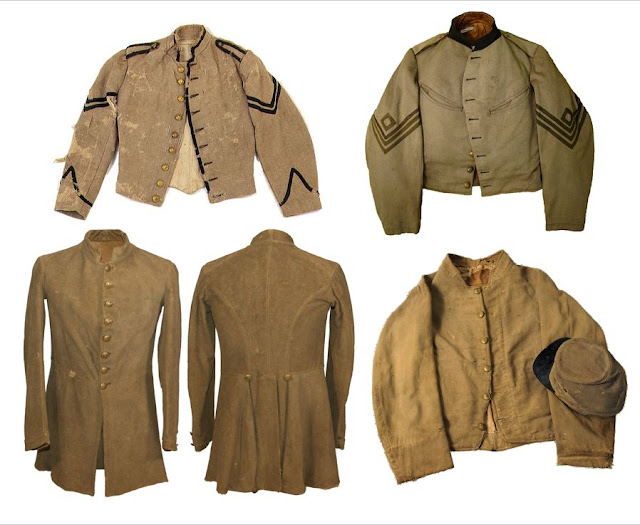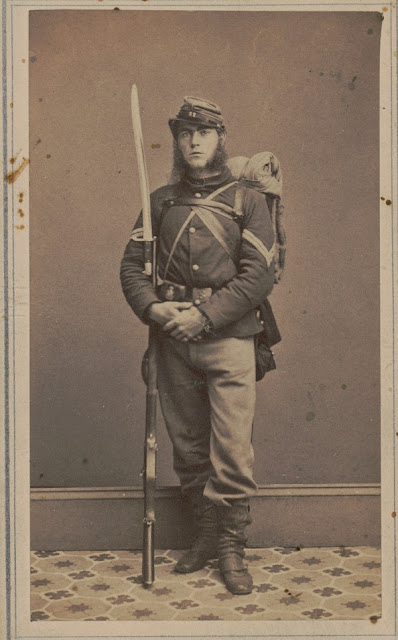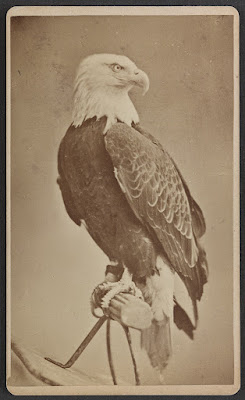Bloody Work in the Dallas Woods: A Voice from the 9th Indiana
In the winter of 1883, Bryon Dunn, editor of the Maryville Republican newspaper and formerly a private in the 9th Indiana Infantry during the Civil War, decided to publish a series of articles containing his reminiscences of the Atlanta campaign. Eventually, that series would grow to 33 articles in length, drawing heavily from a diary that he kept while in the service. Among the more interesting articles recalls his experiences during the Battle of Pickett’s Mill which was fought May 27, 1864.
Private Dunn had developed a fever a few days prior to the Pickett’s Mill fight and was essentially knocked out of action. “We were on the battlefield of May 25th where the dead lay thick scattered through the woods,” he noted. “We were ordered to build works but I grew so sick that I had to go to the rear and lie down. All I know is that I lay there all day, deathly sick. The roar of battle had no impression on me and I didn’t know or care what was going on around me Dr. Gillmore visited me several times during the day and fed me quinine as lavishly as if it didn’t cost the government a cent.”
He picks up the story on the morning of May 27, 1864:
Friday May 27 found me a little better
but still unable to march. The regiment was ordered to the left. Dr. Gillmore
came and offered to send me to the hospital, but I refused, saying I would soon
be all right. So, the doctor gave me an extra dose of quinine, wrote me a pass
to come at will, and I was left alone. Yet not alone, for other troops moved in
but I was nothing to them. The boys had placed a fresh canteen of water by my
side and made me as comfortable as possible before they left. The booming of cannons
and rattle of musketry along the front told me that the army was busy.
Slowly the day dragged along. By noon, I was free of fever
and could walk so by slow stages I took after the brigade. It took me about an
hour and a half to go a mile then I found myself in the rear of the brigade.
The 9th Indiana was out in front with my company (Co. C) on the
skirmish line and shooting like fun. The enemy was answering lively, many of
the balls coming clear back to where I was.
About 5 o’clock, a section of the 5th Indiana
Battery moved up to the works the regiment had thrown up. By this time, having
had something to eat (the first in two days) and, feeling much better, I
concluded to go out and have a hand in the fight. I found the regiment behind
rude works which sheltered them from a heavy fire from the enemy. The section
of artillery was placed to the right of Co. C and opened fire. I lay almost
under one of the guns and the concussion was very disagreeable.
 |
| Private Bryon Archibald Dunn, Co. C, 9th Indiana Infantry (1842-1926) |
The Confederates poured in a tempest of balls and soon one
artilleryman was killed as well as two of the horses. The remaining horses were
taken to the rear. As the works were crowded (and to avoid the concussion of
the cannons), a few of us went about five paces in the rear of the works and
laid down, thinking the works would protect us. I had been there but a few
moments when a ball came from the left oblique, striking me on the cartridge belt
and glancing. It brought a sharp exclamation of pain and at first I thought I
was hit hard but soon found I only had a black and blue side.
Just before dark, a sad accident befell the beloved coffee
pot belonging to Hetrick and myself. We had stuck to it through thick and thin
and well had it served us. George Crampton asked to borrow it, saying he would
go back to the rear and make some coffee. We told him to take it and he
started; very naturally, he gave his arm a swing, throwing the bottom of the
boiler towards the enemy.
As if guided by some impish impulse, spat came a ball,
striking the square in the bottom and knocking a hole through it that you could
put your fist through. George gazed on the sorely wounded vessel for a moment, quietly
remarked, “I don’t believe I want any coffee,” then lay down in the trench. I
declared I would have revenge and took a half dozen extra shots at the enemy.
During the forepart of the night, the firing was heavy; in
fact, it hardly ceased all night. The 9th had one killed and three
wounded during the day; Sergeant Cleveland of Co. C was one of the wounded. The
section of battery by us had two killed and two wounded. There was a heavy
firing to the left of us, as if there was a severe engagement in progress. The
firing was occasioned by one of the bloodiest conflicts for the number of men
engaged that was fought during the campaign. Although it was our own corps engaged,
we knew nothing of the desperate conflict until we met the boys days after and
they told us of it.
Strange as it may seem, General Sherman in his Memoirs never hints at this fight and unless one had read the history of the Army of the Cumberland or General J.D. Cox’s Atlanta, he knows nothing of it, even though he was in Sherman’s army at the time. The whole affair seems to have been kept as still as possible. That it was a badly managed affair there is little doubt and perhaps that accounts for as little being said about it. But it was blunders of the officers, not of the men. Men never fought more bravely.
“From Chattanooga to Atlanta: Across the Etowah-The Alatoona Mountains, Battle of New Hope Church,” Private Byron Archibald Dunn, Co. C, 9th Indiana Volunteer Infantry, Maryville Tribune (Missouri), February 21, 1884, pg. 1; also, “From Chattanooga to Atlanta: Bloody Work in the Dallas Woods,” Maryville Tribune (Missouri), February 28, 1884, pg. 1











Comments
Post a Comment